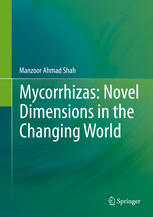

Most ebook files are in PDF format, so you can easily read them using various software such as Foxit Reader or directly on the Google Chrome browser.
Some ebook files are released by publishers in other formats such as .awz, .mobi, .epub, .fb2, etc. You may need to install specific software to read these formats on mobile/PC, such as Calibre.
Please read the tutorial at this link: https://ebookbell.com/faq
We offer FREE conversion to the popular formats you request; however, this may take some time. Therefore, right after payment, please email us, and we will try to provide the service as quickly as possible.
For some exceptional file formats or broken links (if any), please refrain from opening any disputes. Instead, email us first, and we will try to assist within a maximum of 6 hours.
EbookBell Team

4.0
46 reviewsThe book provides basic knowledge in mycorrhizal ecology, knitted with novel conceptual frameworks and contemporary perspectives, especially in the context of global change. In a fast changing world wherein anthropogenic climate change, biological invasions, deforestation, deserti?cation, and frequent droughts have become routine hard realities, the contents of this book urge readers to rethink basic notions of setting and accomplishing objectives in mycorrhizal research to make sense vis-`-vis contemporary challenges. In this book, a global perspective of mycorrhizal diversity and distribution is provided, followed by some insights into the impact of various global change elements such as climate change, plant invasion, and extreme environmental conditions on mycorrhizas and the role of these mutualists in turn to help their host plants to withstand such novel selection pressures. Special attention here is given to the interesting, but largely neglected, topics such as the role of mycorrhizas in ecological restoration of degraded environments and mycorrhizal status of aquatic plants. The basic idea is to unify various topical areas in mycorrhizal science in an integrated framework. This book can be used by the undergraduate and graduate level students studying mycorrhizal symbioses in the context of current ecological applications. The materials in this book will bene?t biological scientists actively involved in research on mycorrhizal ecology and global environmental change. Besides, the contents of the book could be of special interest to restoration ecologists and biodiversity managers.